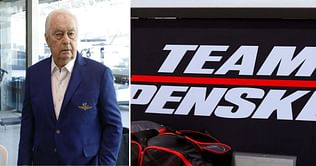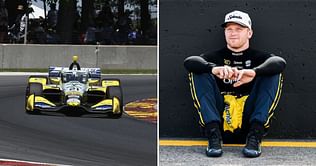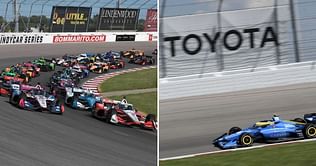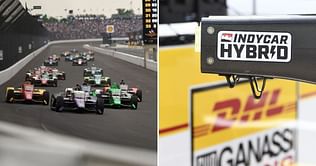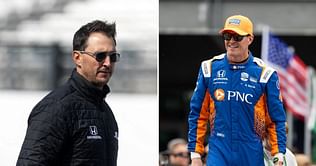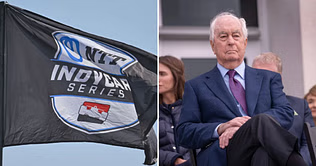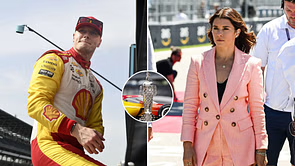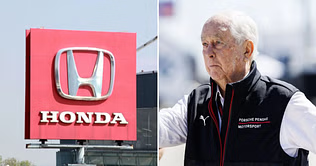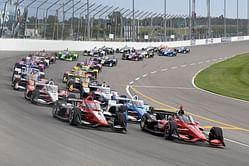
IndyCar racing is synonymous with exceptional driving talent and fast-paced action. Any IndyCar is considered one of the best vehicles when it comes to performance in motorsports. As per their official site, IndyCars can reach speeds of up to 240 mph. Paired with the oval tracks, IndyCars can be considered true masters of speed which are made to conquer the tarmac effectively. IndyCars have various enhancements which enable them to reach such speeds. These include simple aerodynamics which do not produce a lot of drag, powerful engines, lack of driver aids and other weight-reducing measures. IndyCars are equipped with a stagger on their wheels which enables them to turn in easier on the ovals leading to better speeds.
Engines are the primary source of power behind the IndyCars. Without an engine, the massive and daunting IndyCar chassis is nothing more than heaps of carbon fiber and engineering. The IndyCar engines are specially manufactured and produced to return the best results in the given conditions. These engines are built to last the entire race without any technical fault which may lead to the forfeiture of the race at once.
What engines does an IndyCar use?
IndyCar's official site states that the series has regulated the use of V6 twin-turbocharged engines in all of its races. The 2024 season of IndyCar has also mandated the use of hybrid engines in all of its races. The engine is able to produce a maximum power of 700 hp with its combustion unit alone. However, with the addition of an additional hybrid system, it can reach a peak power output of 900 hp. IndyCar allows the teams to use engines from two manufacturers, Chevrolet and Honda. The engines manufactured by Chevrolet are known as the Chevy Indy V6 Unit developed by Ilmor Racing for Chevrolet’s IndyCar program. Honda, on the other hand, uses the HI18TT engine developed by Honda Motor Co. for their IndyCar races. IndyCar has provided a detailed overview of the regulated engine specifications as follows-
Here’s a table with the specifications for IndyCar engines:
| Manufacturers | American Honda Motor Co., Inc., Chevrolet |
| Models | Honda HI24E hybrid Indy-V-6, Chevy INDYCAR V6 |
| Engine Type | 2.2-liter (134.25 cubic inches) V-6, twin-turbocharged with hybrid technology |
| Weight | Minimum weight: 248 pounds (112.5 kilograms) |
| Turbocharging | Twin BorgWarner EFR 7163 turbochargers |
| RPM | Maximum 12,000 RPM (INDYCAR-supplied rev limiter) |
| Maximum Boost Pressure | 1,300 mbar (Superspeedways), 1,500 mbar (short ovals, Road/Street Courses, Indianapolis 500 qualifying), 1,650 mbar (Push-To-Pass) |
| Power | Estimated 650-700 horsepower, with up to 150 additional horsepower via hybrid unit |
| Fuel | Shell 100% Renewable Race Fuel (ethanol) |
| Injectors | Maximum of two injectors per cylinder, one for direct injection, 300 bar max fuel system pressure |
| Hybrid Power Unit | Unique to INDYCAR, developed by Chevrolet (Ilmor) and Honda (HRC) |
| ECU | McLaren Applied Technologies TAG 400i |
| Throttle | Drive-by-wire controlled port throttles |
Teams that use Chevy Indy V6 engines-
A. J. Foyt Enterprises, Dreyer & Reinbold Racing, Ed Carpenter Racing, Juncos Hollinger Racing, Arrow McLaren and Team Penske
Teams that use Honda Indy V6 engines-
Chip Ganassi Racing, Andretti Global, Meyer Shank Racing, Dale Coyne Racing, and Rahal Letterman Lanigan Racing
FAQs on IndyCar Engines
A, IndyCar uses a 2.2 liter twin turbocharged V6 hybrid engine.
A. No, IndyCar does not regulate the use of V8 engines.
A. IndyCars have aeroscreens in order to reduce the risk of injury to the driver's head.
A. IndyCar engines can generally last a total of 10000 miles.
